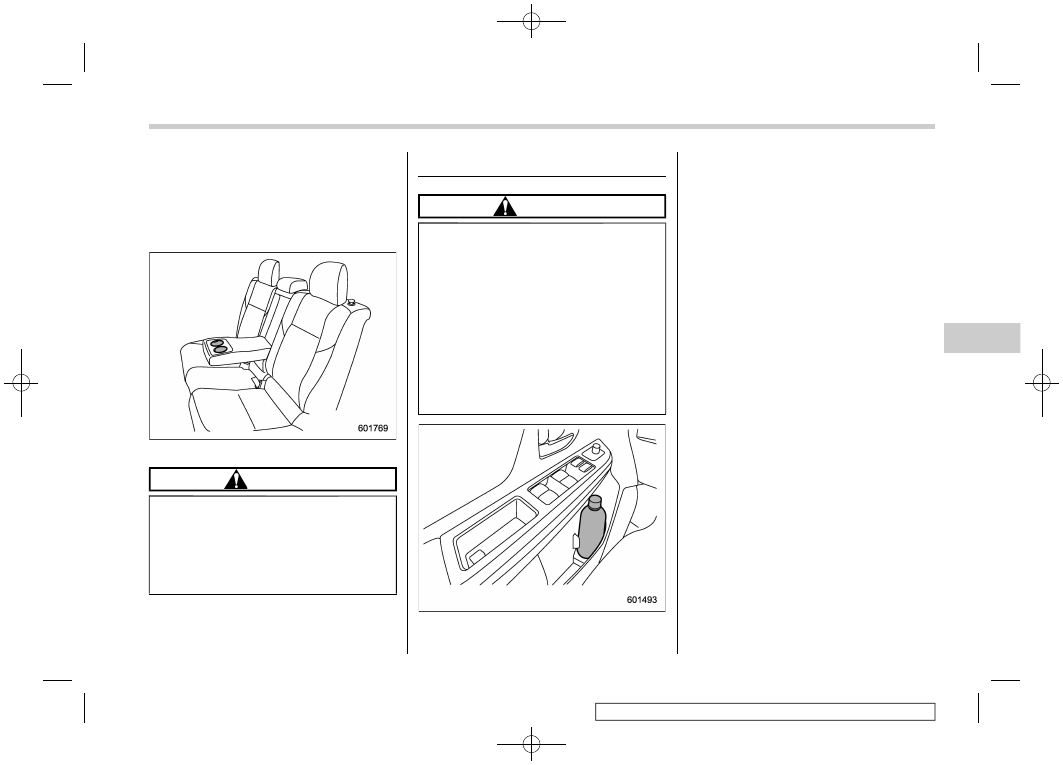Subaru WRX STI (2019 year). Manual - part 16

(255,1)
北米Model "A1720BE-A" EDITED: 2018/ 3/ 9
NOTE
With the divider taken out, you can use
the cup holder as a storage box.
&
Rear passenger’s cup holder
A dual cup holder is built into the armrest.
CAUTION
When a cup containing a beverage is
in the cup holder, do not fold down
the rear seats. Otherwise, the bev-
erage could spill while driving, and if
the beverage is hot, it could burn
you and/or your passengers.
Bottle holders
CAUTION
.
Do not pick up a bottle from the
bottle holder or put a bottle in the
holder while driving. Doing so
can distract you and lead to an
accident.
.
When placing a beverage in a
bottle holder, make sure it is
capped. Otherwise, the beverage
could spill when opening/closing
the door or while driving and, if
the beverage is hot, it could burn
you and/or your passengers.
You can use the bottle holder equipped on
each door trim to hold a beverage bottle
and other items.
Interior equipment/Bottle holders
6-7
6